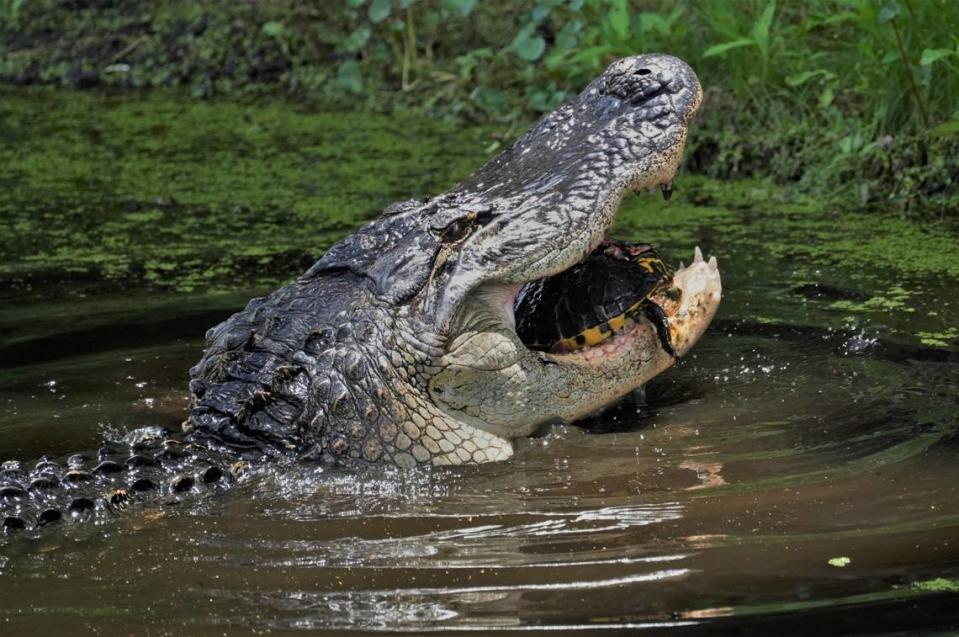Turtles are on the menu of waking alligators in Port Royal. ‘You’ll never forget the crunch’
Mike Shay heard the crunch as he stood on the boardwalk at Cypress Wetlands in Port Royal, where he had gone to photograph birds. Then he turned and saw nature in action: A yellow-bellied slider turtle in the jaws of an 8-foot-long alligator, about to become lunch. The crunching sound Shay heard was the turtle’s hard shell cracking as if it were an egg.
“It took me over 2 years to get this shot,” said Shay, who knew that gators sometimes feed on turtles, after he posted a photo on Facebook Monday. “Now that I have it, I’d prefer not to see this again.”

Each year, Cypress Wetlands draws thousands of herons and egrets and other bird species to Port Royal. About 20 alligators also patrol its waters. The gators even inspire art. In November, a 7 1/2-foot-long and 2 1/2-foot-wide alligator sculpture weighing 125 pounds was installed at the entrance.
But the apex predators of the big swamp and rookery in the heart of the town have been keeping a low profile for the past several weeks because they’ve been in brumation, the reptilian equivalent of hibernation, says the South Carolina Aquarium.
When they brumate, alligators crawl into the mud for warmth and shelter as their metabolic rate slows down and they become lethargic, says Jenn Clementoni, a master naturalist who serves on the board of the Friends of Cypress Wetlands, a not-for-profit provides education about the wetlands and bird rookery.
But with temperatures rising, alligators are beginning to wake up, Clementoni says, and they need protein. Turtles are easy pickings.
“When you see it,” Clementoni says, “you will never forget the crunch.”
What’s ironic, Clementoni says, is that turtles sometimes can be seen sitting on the backs of alligators.
Alligators, she says, are opportunists and will eat about anything. Clementoni once saw an alligator wolf down a large blue crab. At Cypress Wetlands, they also regularly feed on young birds that fall out of their nests, she says. The nesting season, Clementoni notes, is just starting to get underway. She also recommends that visitors be on extra alert when they are around bodies of water now that the weather is getting better and alligators are coming out of their stupor.
Shay, the photographer and social media director with Friends of Cypress Wetlands, actually took the photograph of the alligator eating the turtle two years ago. But he did not share it “because I prefer to show them PG images.” But with the recent cool temperatures, there hasn’t been much action at the wetlands and he likes to post daily on the not-for-profit’s Facebook page. So Shay decided share his amazing photograph Monday. He only posted one of the 50 exposures he took because the others “were two gruesome.”
Shay knew alligators ate turtles and for years he had been on the lookout when he got lucky. “I was actually shooting some birds when I heard a crunching sound off to my right and it was like, well, there it is,” he recalled.
His Johnny-on-the-spot photography was dropping jaws in the Facebook comments on Monday.
“This is raw beauty and brutality in one moment,” one commenter posted.

